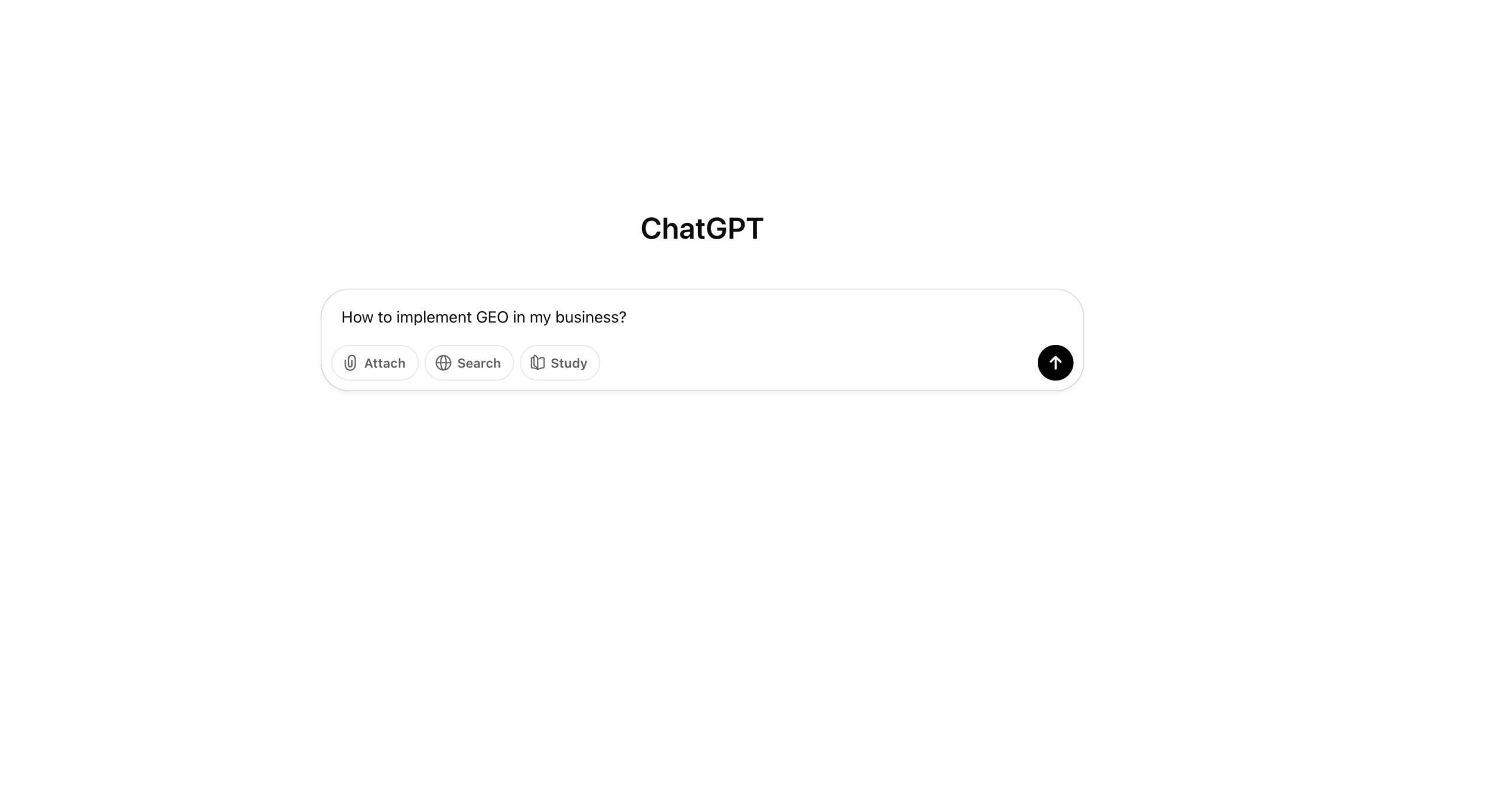I’ve had this thought for a while now: build my tree, and people will come to eat. If I build a tree that is strong and valuable, its branches will be sturdy enough to feed many nations. In business, that tree is your brand, your reputation, and your connection to the people you serve. The roots are your understanding of your ideal client. Everything grows from there.
If you want to dig deeper into how to identify and connect with your ideal client, check out our Marketing Clarity Check at dba marketing pros. It’s a great place to start building those strong roots.
Lately, a new branch has started to grow in the digital marketing world called GEO, or Generative Engine Optimization. There’s a lot of noise around it, with people calling it the next big thing that will take over the internet. And in some ways, they’re right. I’ve heard stories from clients who landed their dream projects because a prospect asked an AI tool like ChatGPT, “Who is the best remodeler in Raleigh?” and their name popped up.
That’s the power of GEO. But I see it for what it is: a powerful new tactic, not a replacement for the entire strategy. It’s a new branch on the tree, not the whole tree itself.
What is Generative Engine Optimization (GEO)?
So, what is this new buzzword? Simply put, GEO is the process of optimizing your website and content so that AI-driven search engines like ChatGPT, Perplexity, and Google’s AI Overviews will find you and feature you in their answers. While traditional SEO focuses on getting your website link to the top of a results page, GEO focuses on getting your information directly into the AI-generated response.
Think about how you use Google versus how you might use an AI chatbot. With Google, you type a query and get a list of links to click. With an AI tool, you ask a question, and it gives you a synthesized, conversational answer. GEO is about making sure your brand’s voice, expertise, and services are part of that conversation. It works by structuring your content to be easily understood by these advanced systems, using clear language, and directly answering the questions your audience is asking.
This is a big shift, and it’s happening fast. According to Gartner, search engine volume is predicted to drop significantly by 2026 as more people embrace AI-powered search. This means that relying only on old-school SEO might not be enough in the coming years.
Before You Chase the New Tactic, Know Your People
I’ve always believed that to be successful in marketing, you have to start by understanding your client. You need to know their business, their vision, and the people they are called to serve. The same truth applies here. Before you pour all your resources into getting ranked in ChatGPT, you have to ask a fundamental question: is my ideal client even there?
The real work, the foundational work, is still about diagnosis. You have to find out where your ideal clients are spending their time and energy. How did they find you in the first place? Was it through a referral, a Google search, a social media post, or an in-person event?
If your consumers are not using AI tools every day, then focusing all your effort on GEO is like planting a beautiful tree in a desert where no one will ever see it. Other tactics will still work. Word-of-mouth, community networking, and a strong local SEO presence are still incredibly powerful, especially for service-based businesses.
Building Your GEO Strategy with Intention
If you’ve done your homework and discovered that your audience is, in fact, using AI to get answers, then it’s time to add GEO to your digital marketing strategy. But you must do it with intention. The goal isn’t just to be seen by everyone; it’s to be found by the right people, the ones who will become high-value clients.
This is a big shift, and it’s happening fast—Gartner predicts that search engine volume will drop significantly by 2026 as more people use AI-powered search. You can read their analysis here.
Here’s what you can do now to prepare:
- Revisit Your Website Content: Make sure your website clearly and directly answers the questions your ideal clients have. Use natural, conversational language. AI engines favor content that gets straight to the point.
- Focus on Authority and Trust: AI models are designed to pull information from sources they deem credible. This is where your expertise comes in. Share case studies, testimonials, and in-depth articles that showcase your knowledge. Cite your sources and link to other authoritative sites to build credibility.
- Think in Terms of Questions: Structure your content around the questions people are asking. Use headers and FAQ sections to make it easy for both humans and AI to find the answers they need.
Ultimately, GEO is another tool in our toolbox to help you connect with the people who need you most. It’s a powerful tactic for lead generation, but it won’t work in a vacuum. It has to be built on the solid foundation of knowing your ideal client and creating content that genuinely serves them.
The real question isn’t just “How do I get ranked by AI?” but rather, “What content will connect with the users who matter, and how can I guide them to become loyal clients?” When you get that right, you’ll find that any tactic, whether it’s SEO, GEO, or a simple handshake, will bring you the growth you’re looking for.
Ready to find clarity on your marketing and attract the clients you’re meant to serve? Let’s have a conversation. Our Marketing Clarity Check is designed to help you understand your vision and build a strategy that delivers results that matter.





